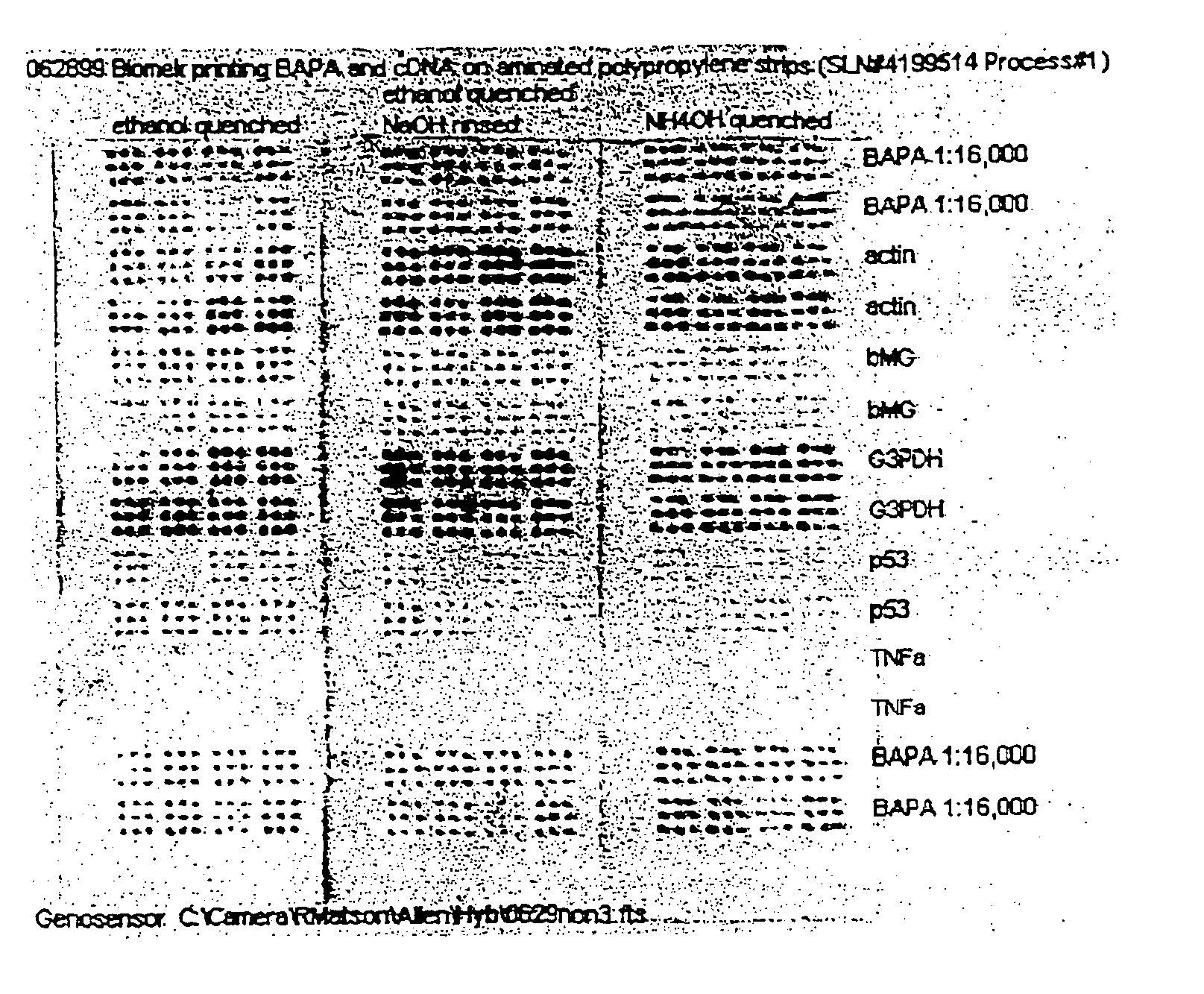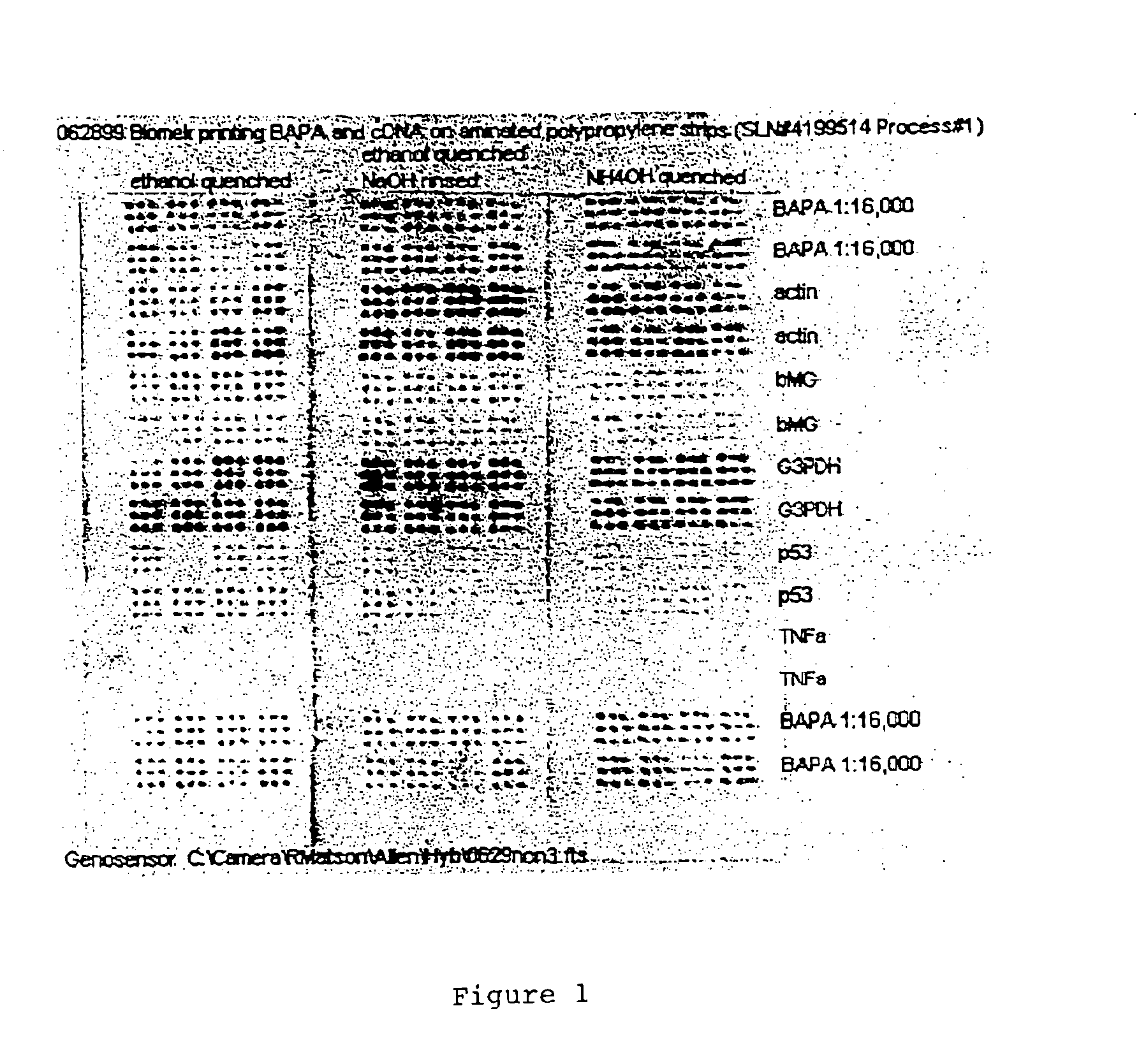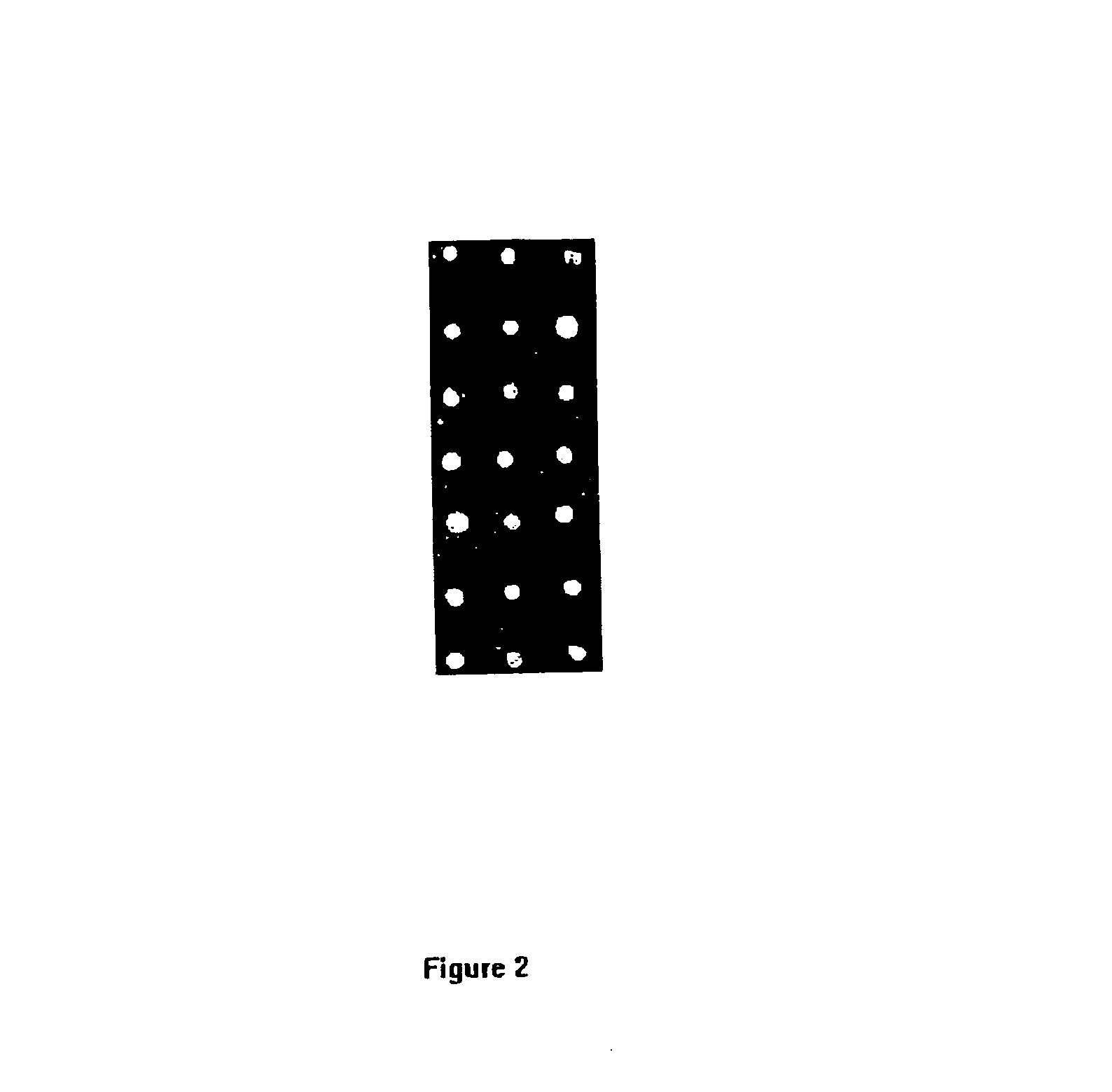Immobilization of biopolymers to aminated substrates by direct adsorption
a biopolymer and direct adsorption technology, applied in the direction of sugar derivatives, material analysis, chemical/physical/physicochemical processes, etc., can solve the problems of difficult to obtain accurate and reproducible data with direct synthesis arrays, undesirable non-specific electrostatic binding of nucleic acids, etc., to achieve cost-effective production of modified, reduce production costs, and simplify the task of making arrays
- Summary
- Abstract
- Description
- Claims
- Application Information
AI Technical Summary
Benefits of technology
Problems solved by technology
Method used
Image
Examples
example 1
Preparation of cDNA Arrays
Polypropylene slides were surface aminated by a radio-frequency discharge into ammonia gas, as described in Coassin et al. (U.S. Pat. No. 5,554,501, assigned to the assignee of the present invention). Unmodified cDNA of actin, β-microglobulin, G3PDH, p53, and TNF-a genes were prepared each at a final concentration of InM in 50 mnM sodium bicarbonate buffer, pH 9. A Biomek 2000™ robotic system (Beckman Coulter, Inc., CA) equipped with a 384-pin HDRT system (Beckman Coulter, Inc., CA) was used to apply 10 nl aliquots of cDNA solutions onto the aminated polypropylene slides. A set of 5-(Biotinamido)pentylamine (BAPA) markers, (Pierce Chemical, IL), were also printed at both ends of each slide, thereby flanking the cDNAs. BAPA, which binds streptavidin-enzyme conjugate independently of hybridization, serves as an internal control for assay robustness. Following the application of the cDNA and BAPA markers, the slides were dried at 35° C. for 15 minutes. Then th...
example 2
Preparation of Protein Array
Human IgG attachment: Polypropylene film was surface aminated by a radio-frequency discharge as described in Example 1. Diluted Human IgG (Pierce Chemicals, cat. # 31877, 28 mg / mL) stock to 1 mg / mL in sodium bicarbonate (50 mM, pH 9) and 4% sodium sulfate. Twenty-one 0.5 μL spots were pipetted onto an amino polypropylene strip 2 cm wide and 8 cm long. Attachment reaction was allowed to proceed for 60 min. at 25° C. The film was rinsed with Casein solution (1 mg / mL in 50 mM sodium carbonate, 0.15M NaCl pH 9) for 60 min. at 25° C., and then rinsed twice in deionized water and by 1×TBS, 0.02% Tween-20, pH 7.4 briefly. The strip was then used for binding assay.
Conjugation with goat anti-human IgG alkaline phosphatase: The 200 μL of diluted goat anti-human IgG alkaline phosphatase (Pierce Chemicals. cat. # 31310) solution 1:1000 in blocking buffer (1×TBS, 1 mg / mL Casein, 0.02% Tween-20 pH 7.4) was pipetted to a petri dish and the above-spotted polypropylene st...
PUM
| Property | Measurement | Unit |
|---|---|---|
| pH | aaaaa | aaaaa |
| temperatures | aaaaa | aaaaa |
| temperature | aaaaa | aaaaa |
Abstract
Description
Claims
Application Information
 Login to View More
Login to View More - R&D
- Intellectual Property
- Life Sciences
- Materials
- Tech Scout
- Unparalleled Data Quality
- Higher Quality Content
- 60% Fewer Hallucinations
Browse by: Latest US Patents, China's latest patents, Technical Efficacy Thesaurus, Application Domain, Technology Topic, Popular Technical Reports.
© 2025 PatSnap. All rights reserved.Legal|Privacy policy|Modern Slavery Act Transparency Statement|Sitemap|About US| Contact US: help@patsnap.com



